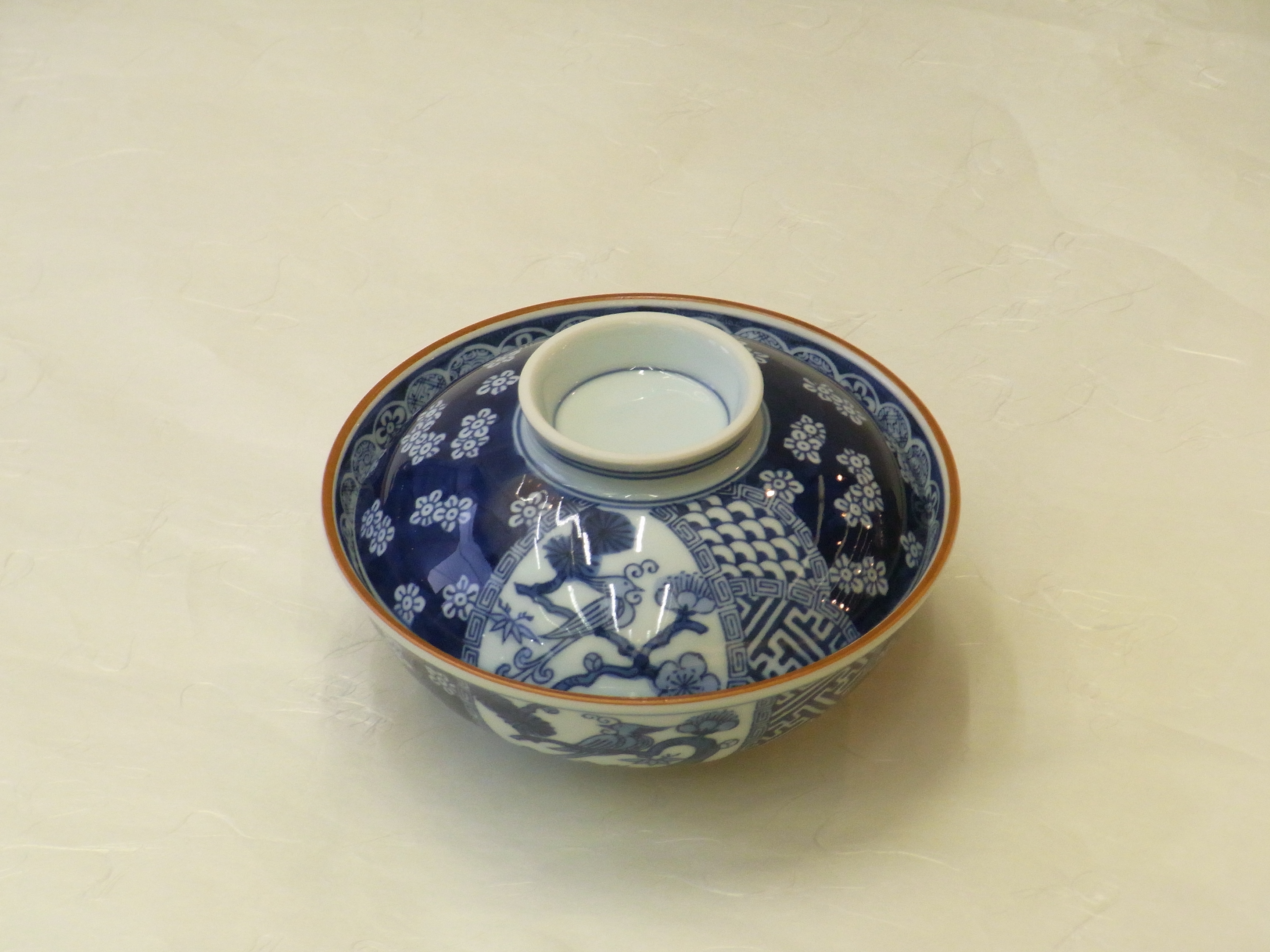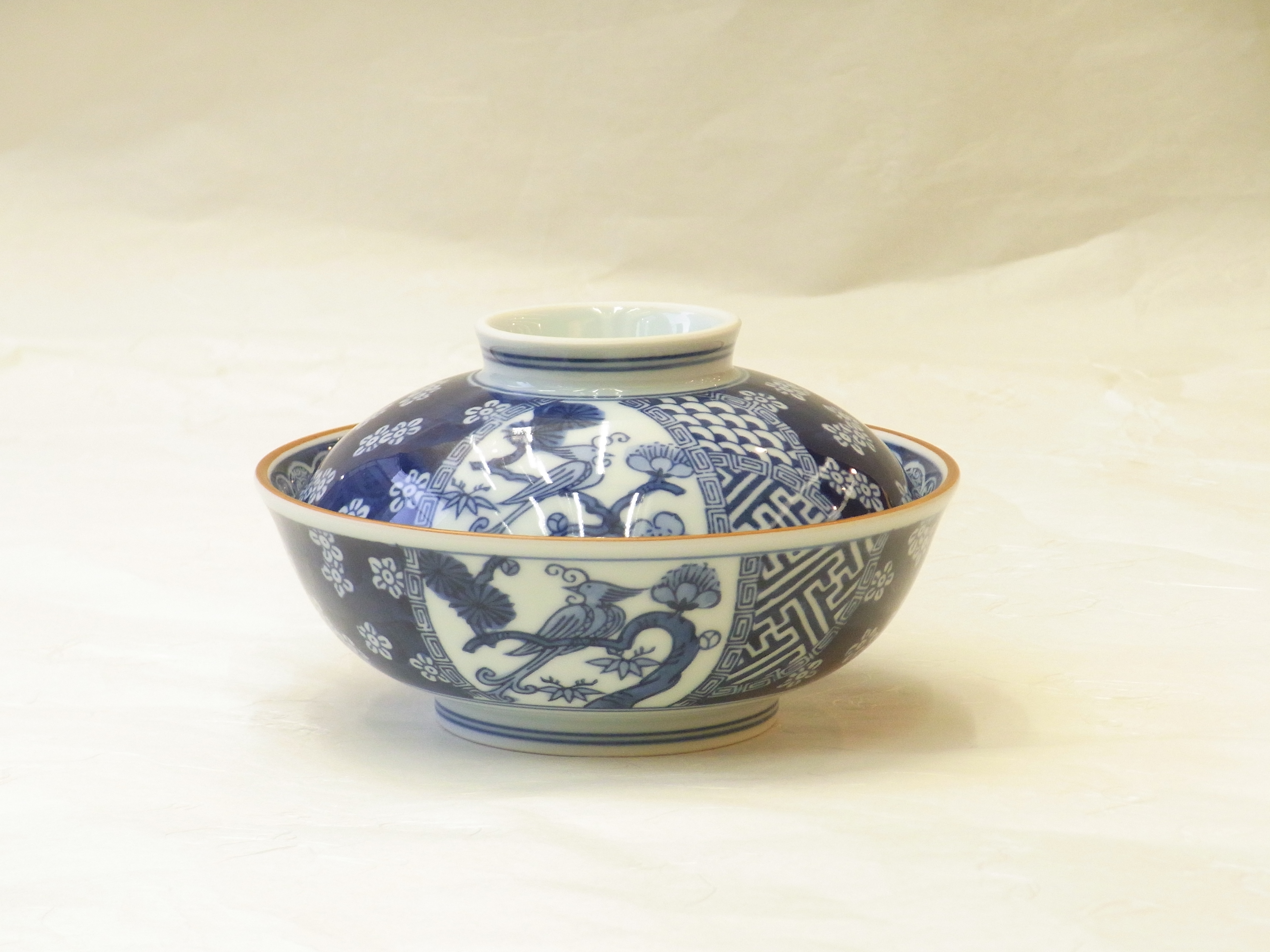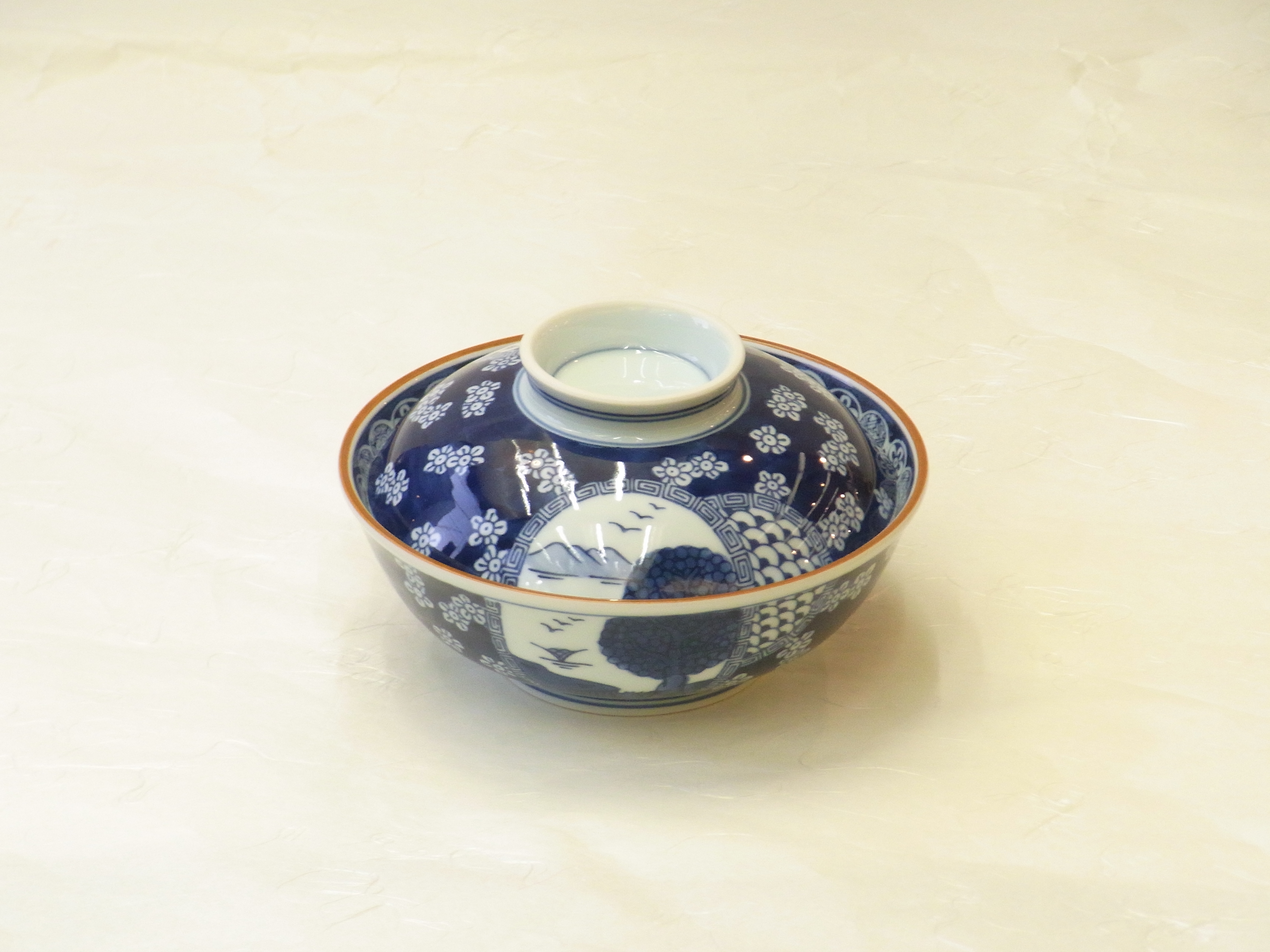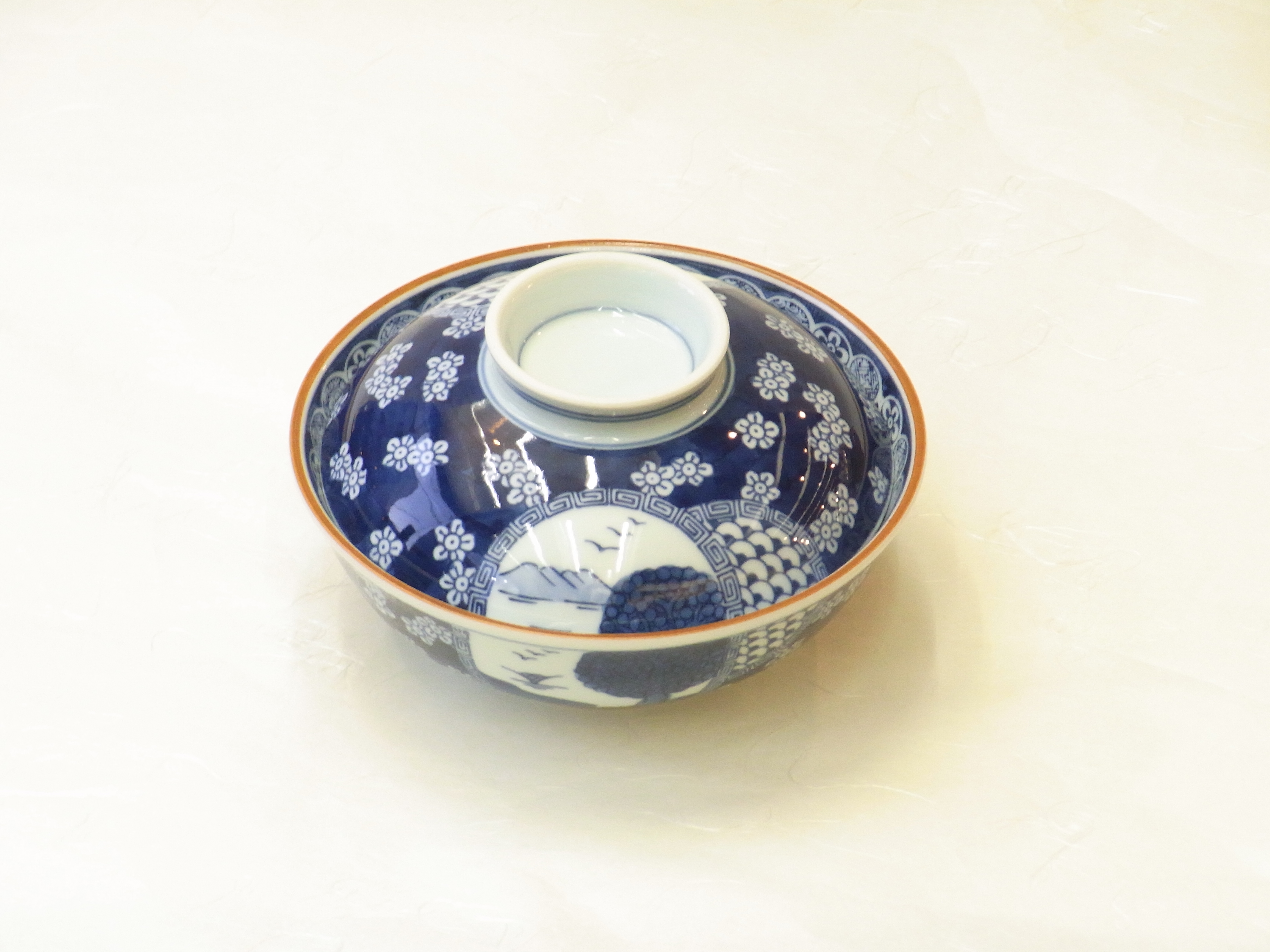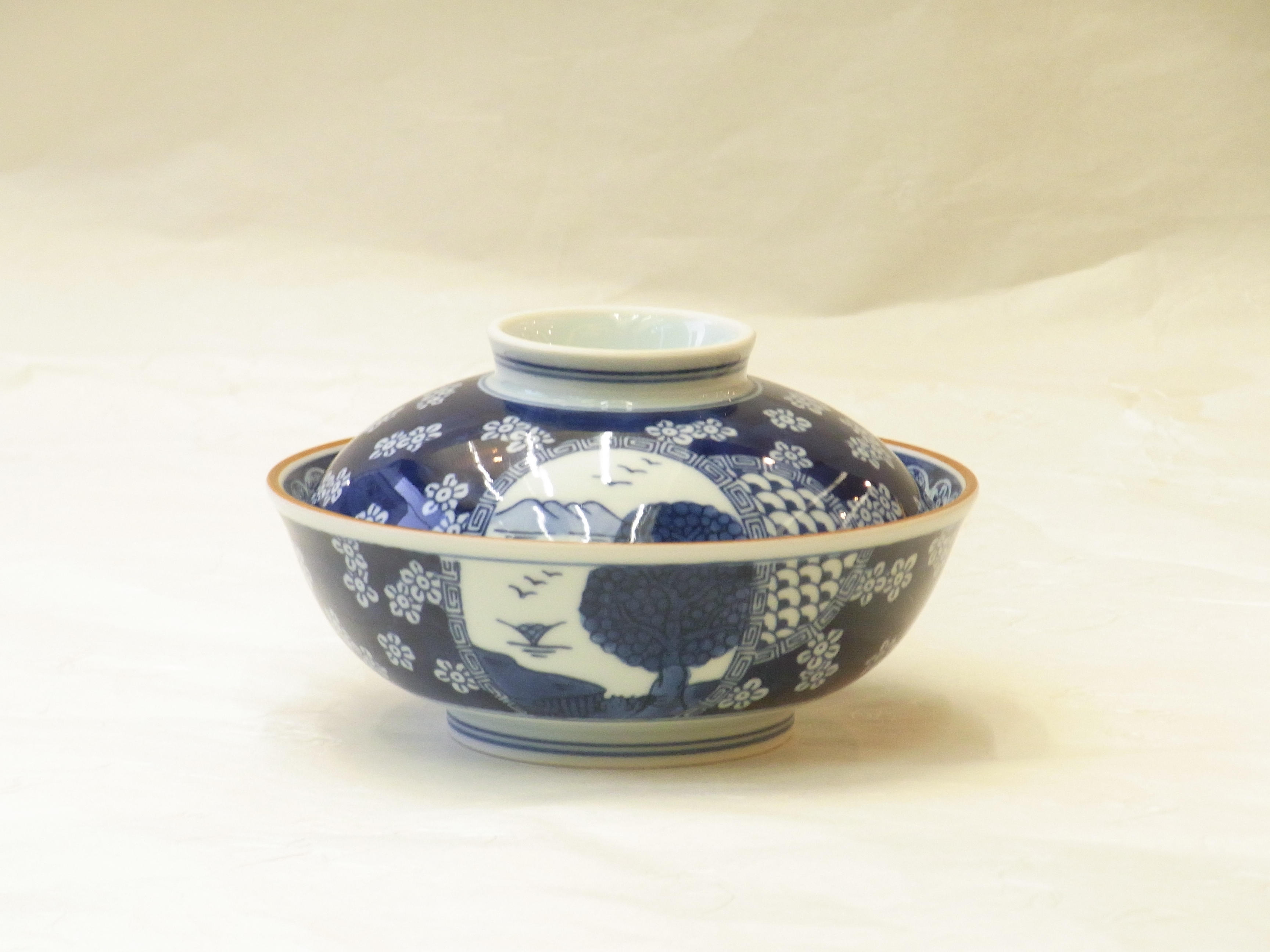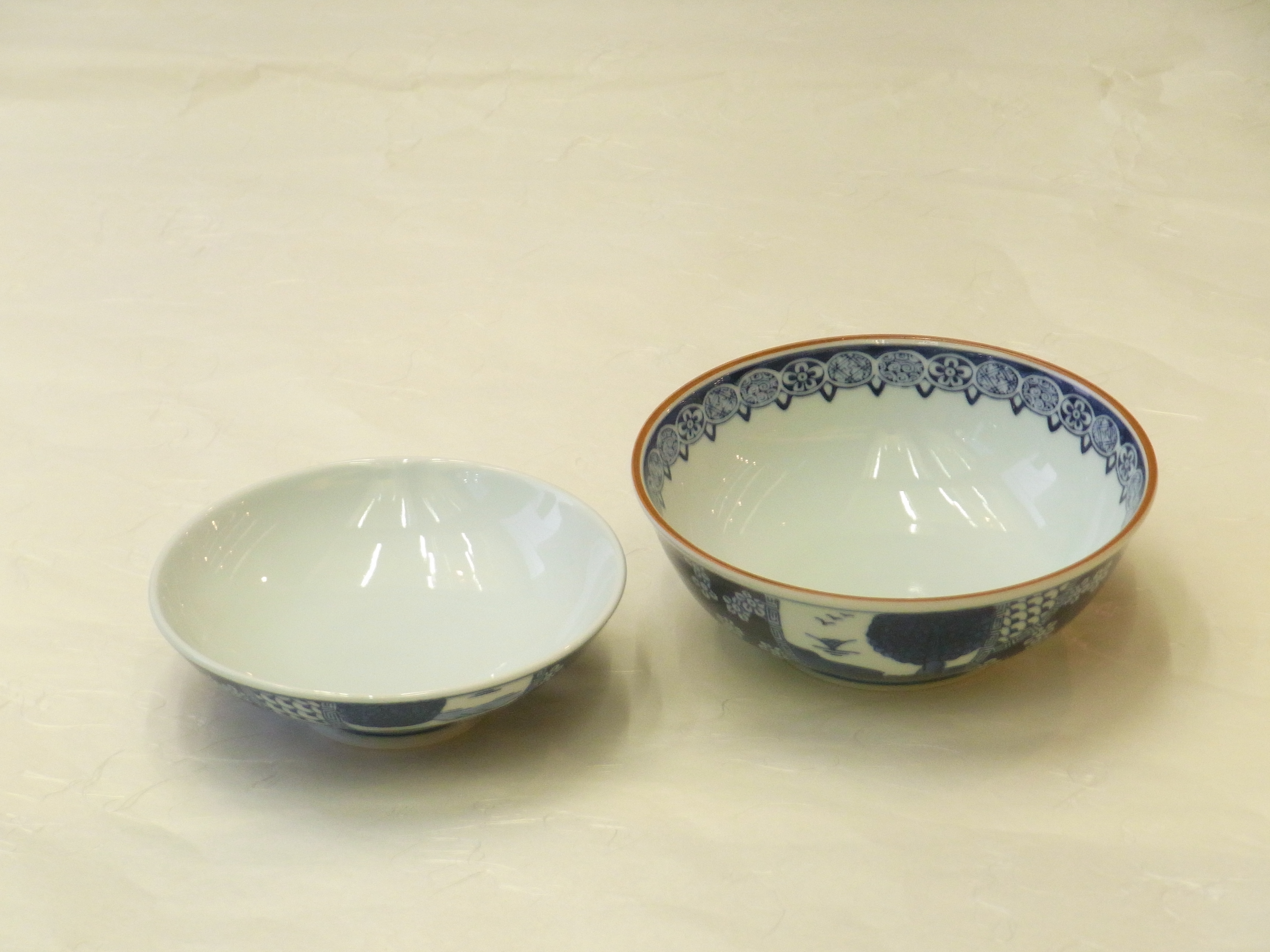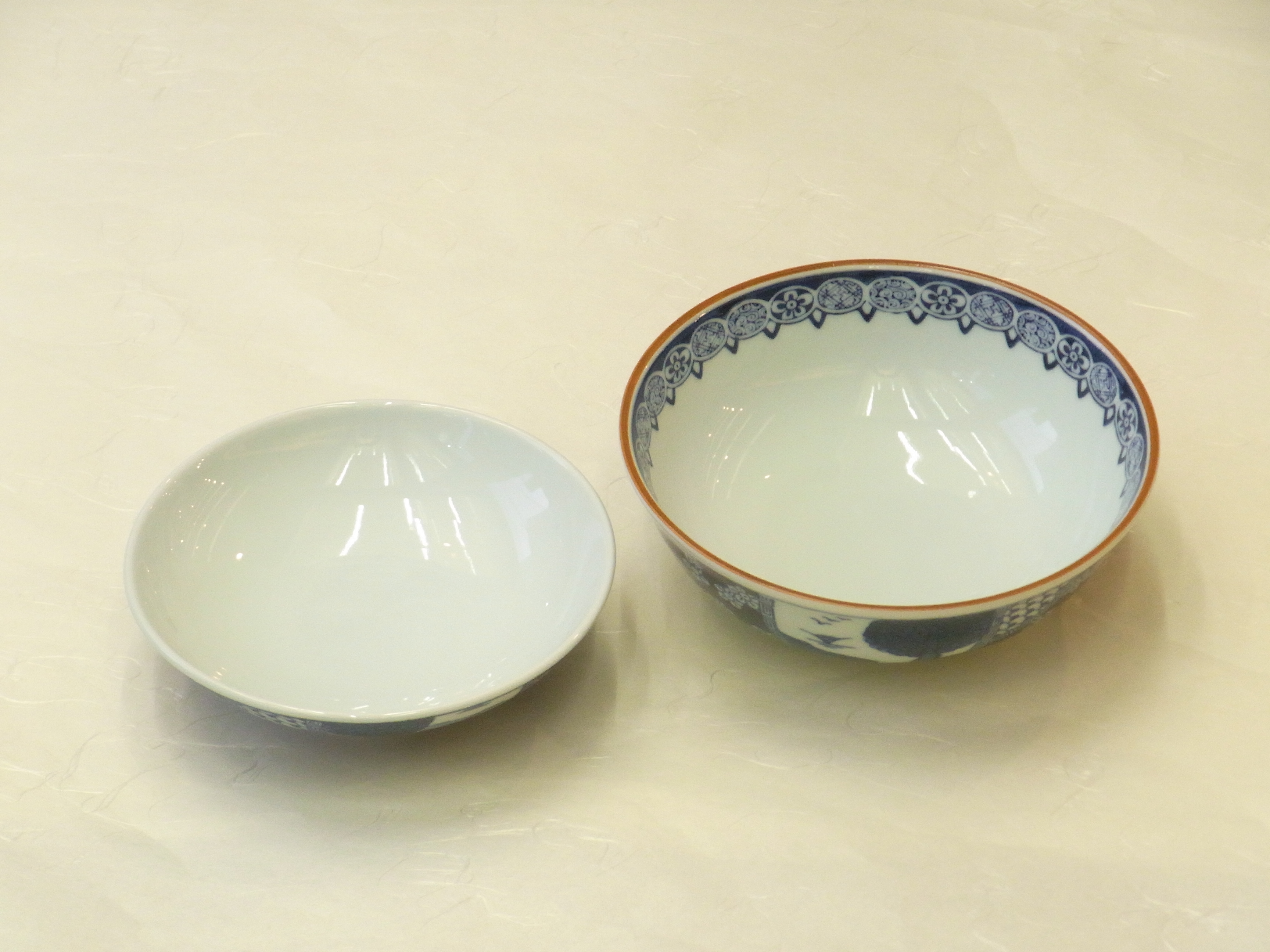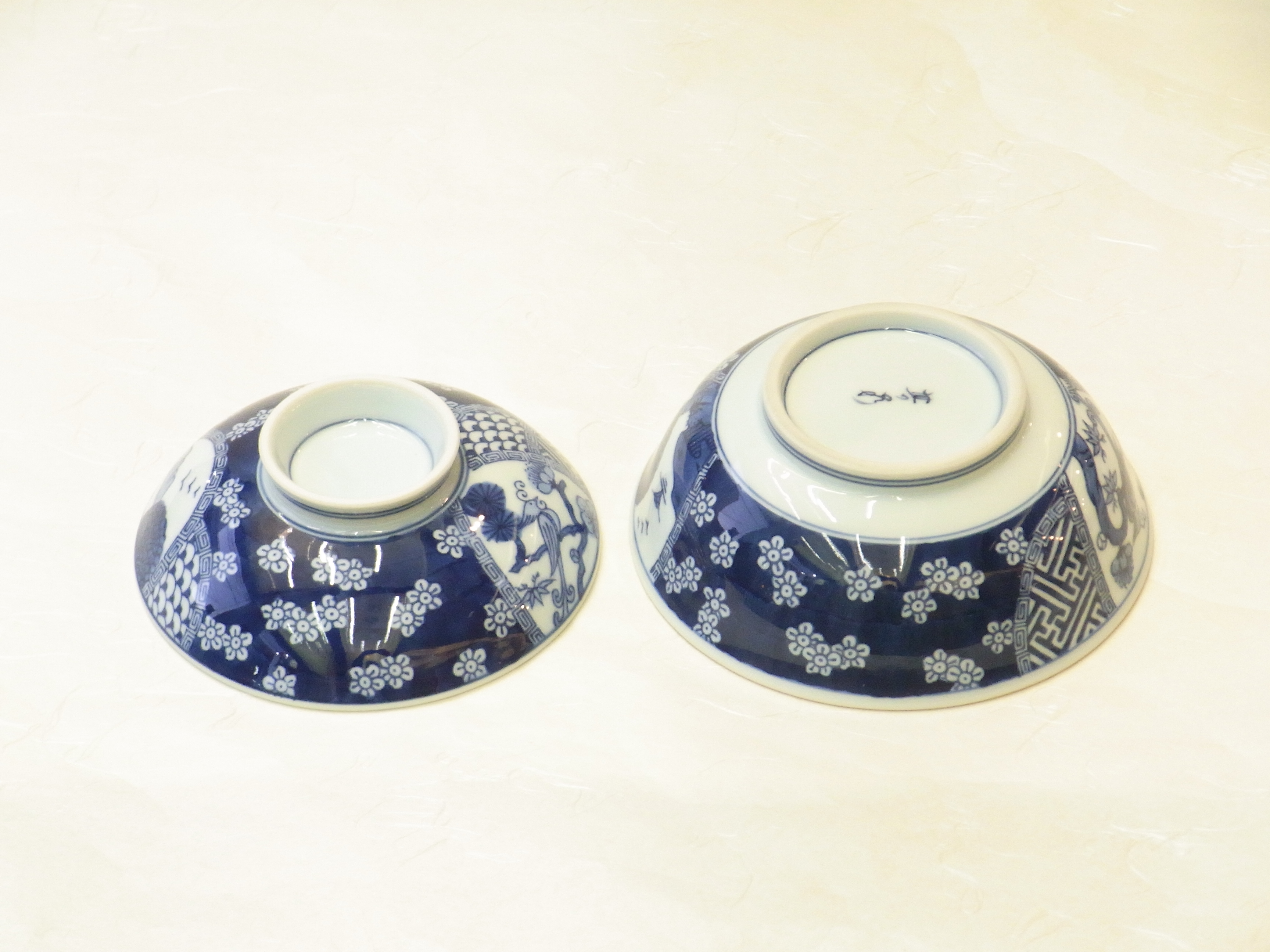径 14.5㎝ 高さ 8.5㎝
It is an introduction of the lid of Shogo from Arita ware.
It is a flat bowl with a lid, and it is a bowl that puts out boiled food etc. in the kaiseki etc.
Because it is flat, it is easy to serve, and because a certain amount enters, it is not a stew.
You can put a variety of dishes and apply them.
The pattern is an orthodox style that dyed the pattern with the motif of plum sand and the bird.
This is a timeless technique that is extremely white and indigo.
It was made from the beginning of Arita porcelain in the 1610s.
This color of indigo is deeply connected to the aesthetic sense of the Japanese.
I melted in.
Since then, dyeing techniques have improved the accuracy and refinement of
Overseas evaluations are also high.
This dyed vessel is hard to get tired of, and with any other vessel
Because it is compatible with each other, it is also attractive that it is easy to match.
介紹從阿裡塔陶器到肖吉的蓋子(燉菜碗)。
這是一個帶蓋子的平碗,在會議席上,它是一個碗,充滿了燉菜等。
因為它很平,很容易變湯,因為一定量的進入,除了燉菜
你可以把各種菜肴,並應用它。
圖案是正統的風格,以李子和鳥為主題。
用白色和琥珀色標記的永恆技術就是這種”染色”。
它于1610年代由阿裡塔瓷器創立。
這種琥珀的顏色與日本人的審美感密切相關。
它融化了。
自那時以來,染色技術提高了精度,
海外評價也很高。
這種染色的儀器是很難感到無聊,和任何其他儀器
因為相容性是好的,也很容易匹配是有吸引力的。
介紹從阿裡塔陶器到肖吉的蓋子(燉菜碗)。
這是一個帶蓋子的平碗,在會議席上,它是一個碗,充滿了燉菜等。
因為它很平,很容易變湯,因為一定量的進入,除了燉菜
你可以把各種菜肴,並應用它。
圖案是正統的風格,以李子和鳥為主題。
用白色和琥珀色標記的永恆技術就是這種”染色”。
它于1610年代由阿裡塔瓷器創立。
這種琥珀的顏色與日本人的審美感密切相關。
它融化了。
自那時以來,染色技術提高了精度,
海外評價也很高。
這種染色的儀器是很難感到無聊,和任何其他儀器
因為相容性是好的,也很容易匹配是有吸引力的。

